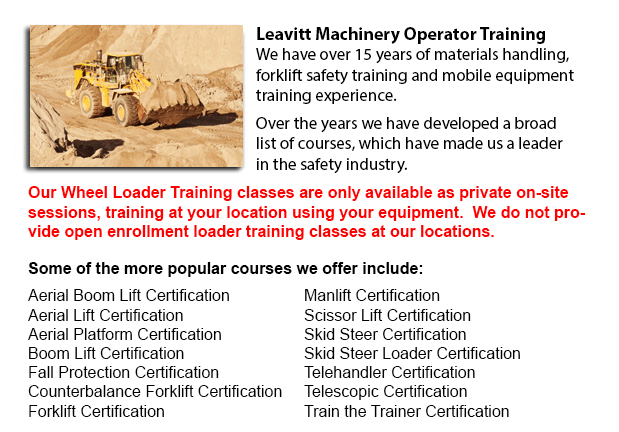
Forklifts are accessible in different load capacities and different units. Nearly all lift trucks in a regular warehouse surroundings have load capacities between one to five tons. Larger scale models are utilized for heavier loads, like loading shipping containers, could have up to fifty tons lift capacity.
The operator can utilize a control to be able to lower and raise the tines, that could also be referred to as "blades or tines". The operator of the lift truck can tilt the mast so as to compensate for a heavy loads tendency to tilt the blades downward. Tilt provides an ability to work on rough surface as well. There are yearly competitions meant for skilled forklift operators to contend in timed challenges as well as obstacle courses at regional lift truck rodeo events.
General operations
All forklifts are rated for safety. There is a particular load limit and a specified forward center of gravity. This vital information is provided by the manufacturer and situated on the nameplate. It is vital cargo do not go beyond these specifications. It is illegal in numerous jurisdictions to tamper with or remove the nameplate without obtaining permission from the lift truck manufacturer.
The majority of forklifts have rear-wheel steering in order to improve maneuverability. This is very helpful within confined spaces and tight cornering spaces. This type of steering differs fairly a bit from a driver's first experience with different vehicles. As there is no caster action while steering, it is no necessary to use steering force to be able to maintain a continuous rate of turn.
One more unique characteristic common with forklift operation is instability. A continuous change in center of gravity happens between the load and the lift truck and they have to be considered a unit during utilization. A forklift with a raised load has centrifugal and gravitational forces that could converge to result in a disastrous tipping mishap. So as to prevent this from happening, a lift truck should never negotiate a turn at speed with its load raised.
Forklifts are carefully built with a load limit for the tines. This limit is decreased with undercutting of the load, that means the load does not butt against the fork "L," and also decreases with fork elevation. Generally, a loading plate to consult for loading reference is situated on the lift truck. It is dangerous to use a forklift as a personnel lift without first fitting it with certain safety tools like for example a "cherry picker" or "cage."
Lift truck utilize in warehouse and distribution centers
Essential for every warehouse or distribution center, the forklift needs to have a safe environment in which to accommodate their efficient and safe movement. With Drive-In/Drive-Thru Racking, a lift truck must go inside a storage bay which is several pallet positions deep to set down or obtain a pallet. Operators are often guided into the bay through rails on the floor and the pallet is located on cantilevered arms or rails. These tight manoeuvres need well-trained operators so as to complete the job efficiently and safely. In view of the fact that each and every pallet needs the truck to enter the storage structure, damage done here is more common than with various kinds of storage. If designing a drive-in system, considering the size of the blade truck, along with overall width and mast width, should be well thought out in order to be sure all aspects of an effective and safe storage facility.
-
Markham Forklift Certification Schools
Markham Forklift Certification Schools - Forklift Certification is mandatory in North America. Hence, forklift training programs are essential both for businesses and for people seeking jobs in industries as forklift operators. Forklift training focu... More -
Telehandler Training in Markham
Telescopic handlers normally called telehandlers for short, are a very popular piece of heavy construction equipment. They are commonly utilized in the construction and agricultural trades. These machines have maximum reaching capability and can get... More -
Markham Zoom Boom Training
Markham Zoom Boom Training - Zoom Boom Training is designed to train operators on variable reach forklifts. The objectives of the training are to impart an understanding of the physics of the machinery, and to outline the operator's tasks. This progr... More -
Markham Heavy Equipment Ticket
Markham Heavy Equipment Ticket - A heavy equipment operator will utilize different construction machinery, depending upon the nature of the task at hand. The large equipment are constructed to carry out specific tasks in the most efficient method for... More -
Markham Scissor Lift Training
Markham Scissor Lift Training - When operating a scissor lift, they must be utilized competently so as to protect the safety of the other employees inside the workplace and to protect the safety of the machine. Competent operators are trained to driv... More -
Markham Manlift Operator Training
Markham Manlift Operator Training - The aerial lift or manlift is a specialized kind of hydraulic platform which is designed to raise a person vertically giving it an alternate name of a vertical personnel lift. These machines are widely used for a m... More -
Markham Heavy Equipment Training
Markham Heavy Equipment Training - The two most common kinds of heavy equipment training are classed into the categories of machinery; equipment that is fashioned with tracks and those with rubber tires. The tracked vehicle are heavy duty equipment s... More -
Markham Forklift Safety Training
Markham Forklift Safety Training - Those wanting work in industries that utilize forklifts should undergo a forklift safety training course before becoming a certified operator of a forklift. There are various ways to go about getting forklift safety... More

Forklift Certification Markham
TOLL FREE: 1-888-254-6157
Markham, Ontario
forkliftcertificationmarkham.com
Email Us
About Us


